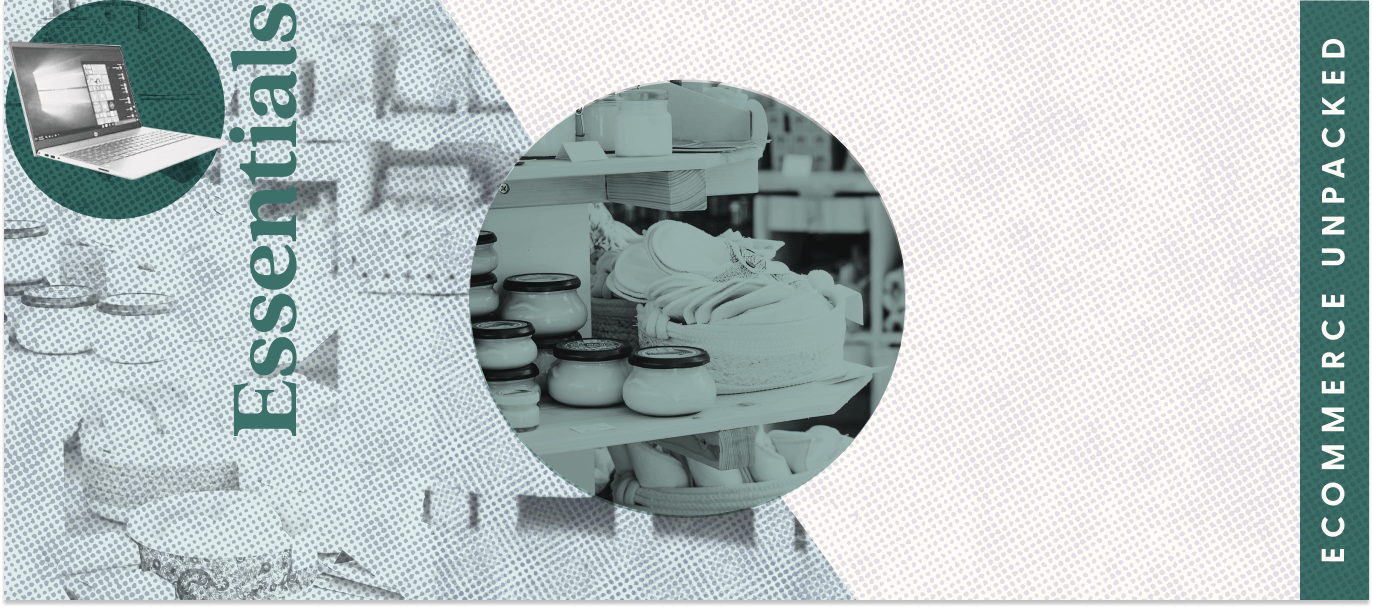As consumer expectations evolve and new tactics and technologies emerge, it’s important for ecommerce businesses to keep up.
That’s why we’ve gathered a list of nine ecommerce trends to watch in 2023—so you can get ahead and stay ahead. This industry moves fast, so take a look and see which strategies you might want to incorporate into your own business.
Key takeaways
- The popularity of voice-enabled devices continues to rise, along with a similar rise in artificially intelligent ecommerce platforms.
- Direct-to-consumer models (DTC), TikTok, live selling, and interactive shopping ads are all increasing in popularity.
- Trending consumer concerns include sustainability, data privacy, and seamless shopping experiences.
Ecommerce trends to watch in 2023
1. Eco-friendly shopping choices for consumers
An IBM study found that one in two consumers say they are willing to pay a premium for sustainability. Meanwhile, four in five consumers in 2022 said sustainability benefits are vital when choosing a brand to support. This has caused more and more retailers to invest in corporate sustainability initiatives. For example, major players like Apple are pledging to be carbon neutral by 2030.
Companies hoping to become more sustainable and eco-friendly should start with the following steps:
- Assess current operations. This is the stage where environmental experts or organizations can help. Before making any changes to your business, assess your existing processes. Ensure you are solving the right problems in the right order. Common sustainability issues include packaging, ethical materials sourcing, and energy consumption.
- Pace yourself. Sustainable changes to your business will not happen overnight, and making progress effectively requires careful planning. For example, you may have to end current vendor contracts to switch to zero-waste packaging. You might have to experiment with new and different materials. Changing energy sources from petroleum-based ones to renewable could also require system overhauls. In short, look before you leap.
- Get environmental certifications. These are useful for informing customers about your sustainability efforts, but each certification has specific requirements you’ll need to meet. Below are some of the most prestigious environmental certifications:
- B-corp certifications
- Energy Star
- ISO 14001
- Leaping Bunny
- Fitwel
- Adapt and be accountable. Transparency is essential to communicating your company’s sincerity in its sustainability initiatives. Consumers and other industry actors are bound to react to these changes, so use their feedback to refine your processes and improve results.
2. Voice-enabled shopping experiences
In the 10 years since Google launched voice search, it has become a staple feature of almost every smart device. According to a recent survey, 35.1% of consumers use virtual and voice assistants daily. Smart speakers are also becoming more popular, with 35% of the US population owning one in 2022. These speakers are now the central control hub of smart home setups. People use voice assistants like Siri and Alexa to check the weather, play music, and shop online.
Online retailers are leveraging this trend by creating voice-enabled shopping experiences. This increases access for customers with limited mobility, and allows shoppers to quickly and easily find the products and services they want without sifting through multiple pages. It’s an intuitive and hands-free way to shop that makes buying your products easier than ever before.
3. The DTC business model
The direct-to-consumer (DTC) business model is not new, but the pandemic caused a surge in its popularity. Many manufacturers found that selling directly to consumers was more effective and profitable than going through third-party platforms.
Take Nike, for example. In 2019, the brand decided to cut ties with Amazon. They’re now selling directly to customers through their own ecommerce website. This move increased Nike’s share of direct sales to 30%.
Or Recharge customer Mary Ruth’s, which sells liquid and gummy vitamins directly to consumers via their website:

Eliminating the third party can cut costs, which means businesses can offer products at lower prices, or reinvest those savings into marketing efforts and other facets of their business. This model can also create direct interaction between businesses and customers, which can help build those relationships. Customers can come directly to a business with any concerns or questions, creating opportunities to solve problems, upsell, and cross-sell.
The catch of DTC is that it can require more attention from the business. It calls for heavy engagement and more staff and resources to handle the added operational elements, including product shipping, handling, marketing, and customer service.
4. Brand marketing on TikTok
TikTok is a social platform that allows users to create and upload short-form videos. Other users can engage with that content through likes, comments, and shares. While millennials and Gen Z make up most of its users, it also has a large community of older users.
TikTok currently has the highest growth rate of all social media platforms. It was the most downloaded app worldwide in 2021, with over 656 million downloads. In the same year, TikTok was also the first app since Facebook to surpass three billion downloads. It’s great for social commerce and for brand marketing campaigns, and ecommerce businesses are taking note.
There are three ways you can promote your ecommerce business on TikTok:
- Paid advertising: The TikTok for Business hub allows companies to create and launch ad campaigns on the app. You can customize these ads to link to your products, ecommerce site, or social media pages. The app also provides real-time metrics and audience analytics, so you can learn from each campaign and optimize as you go.
- Influencer partnerships: TikTok has launched the careers of many influencers who boast thousands—and sometimes millions—of followers. You can find influencers that work within your target niche and who can promote your services or products to their audience.
- Organic brand content: Creating a branded TikTok account and posting videos can help you gain followers and build your audience. Pay attention to TikTok trends and consider joining in with a version of your own. These trends can change quickly, so seize opportunities when you see them. Engagement is also crucial, so make sure to respond to followers who comment.
5. Live selling & interactive shopping
In live selling and interactive shopping, retailers showcase their products through livestreams (usually on a social media platform), and allow customers to ask questions, get answers, and make purchases in real-time. This tactic first gained traction in China, where it generated $300 billion in revenue in 2021. It’s since spread to the rest of the world, with platforms like Facebook and Amazon jumping on the bandwagon.
The US live selling market is still in its early stages and expected to hit $25 billion in 2023. But with major players like Walmart, Nordstrom, and Macy’s getting involved, it’s expected to skyrocket in popularity.
The main appeal of live selling is its interactivity. It’s an opportunity for brands to get creative in how they show their products, get users to engage, and close sales.
Live selling is most popular among apparel and fashion brands. However, it is also gaining traction selling beauty products, electronics, and food.
6. Shoppable video ads
Videos are a great way to show off your products or services, but the format can sometimes be limiting. Without a clear call to action (CTA) or way to find the products being displayed, you can easily lose potential customers.
Shoppable video ads incorporate calls-to-action and action buttons into the videos themselves. You can link these buttons to your ecommerce website, product page, or a landing page. Some buttons even have an add-to-cart functionality, expediting the checkout process even more.
The Interactive Advertising Bureau reports that 40% of marketers now use shoppable videos, showing a consistent increase from previous years. This should come as no surprise, given the potential this tactic has for shortening customer journeys and boosting conversion rates.

You can find examples of shoppable video ads on YouTube in the form of bumper ads, which often play before a video you select.
7. Addressing data privacy concerns
Personalization can be a powerful way to tailor your customer experience to individuals, helping convince them to buy and to boost their satisfaction and loyalty. But personalized experiences require gathering customer data. This brings us to data privacy, which has become a significant issue for many consumers.
In a recent survey, 86% of Americans said they were becoming concerned about data privacy, while 68% said they were apprehensive about the data that businesses collect.
This is actually an opportunity to potentially win over customers by being transparent about your company’s data practices. Let your audience know the types of data you collect and allow them to opt out if they want. This provides them agency over their data, and demonstrates your company’s respect for their privacy concerns.
8. Omnichannel marketing & shopping
Omnichannel retail involves creating a consistent customer experience across various touchpoints. Those touchpoints might include in-store interactions, website visits, mobile shopping, and phone calls. A customer might encounter your brand through all those channels before buying, and their experience needs to be consistent throughout—yet tailored to the nuances of each individual outlet..
The convenience omnichannel experiences offer often translates into ecommerce sales. Marketers using at least three channels in their campaigns had a 287% higher purchase rate than single-channel marketers. This makes sense, given that 56% of in-store customers used mobile devices to research products before buying.
Customers are accustomed to using many devices during their buying journey. An omnichannel strategy meets them wherever they are. It ensures a smooth experience no matter the channels they use.
9. Artificial intelligence in online shopping
In the ecommerce industry, artificial intelligence is proving to be useful in data mining, natural language processing, and machine learning.
Here are a few advantages of applying AI to an ecommerce business:
- Targeted marketing and advertising: By collecting customer data, AI can help generate content and recommendations tailor made for specific customers. It can also predict shopping behavior based on a user’s online browsing and search history, helping optimize marketing campaigns and personalize customer experiences.
- Chatbots and virtual assistants: In a physical store, customers can approach staff with questions or concerns. Online stores usually do not have this benefit, so customers end up doing their own research or just leaving. AI chatbots and virtual assistants can help fill this service gap. They provide 24/7 assistance to customers, and the more you use them, the better they become at answering questions.
- Inventory management and automation: Storage space is limited, supply chains are volatile, and consumer behavior can fluctuate. AI can help manage inventory by predicting patterns, spotting possible supply chain issues, automating packing or ordering procedures, and more. All this can help streamline inventory management and help avoid lost sales due to inventory problems.
FAQs on ecommerce trends for 2023
1. Is omnichannel retail the same as multi-channel retail?
While both strategies incorporate multiple channels to enhance the customer experience, omnichannel retail focuses on providing a consistent and holistic experience across those channels.
2. Which trends help reduce customer acquisition costs?
As gaining new customers becomes costlier than ever, improving retention can help compensate. A few of the trends we discussed, including AI technology and DTC selling, along with personalized experiences, subscription plans, and loyalty programs can help reduce churn and increase your customers’ lifetime value.
3. How can a small or new business stand out from the competition?
Use the 9 trends we highlighted above to launch and test new programs, technology, and business models, reinvesting in the tactics that work.



